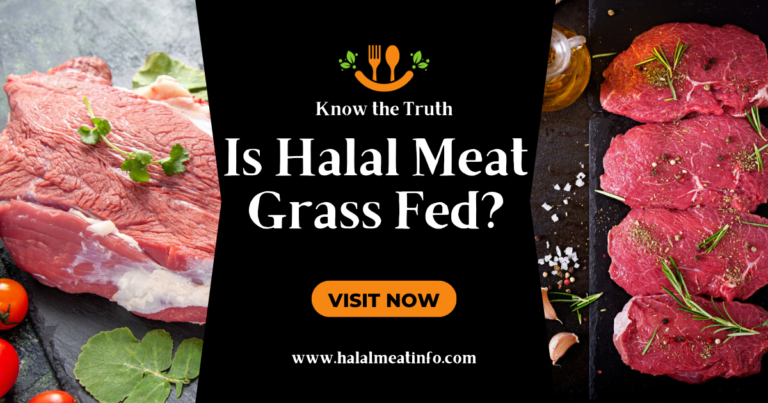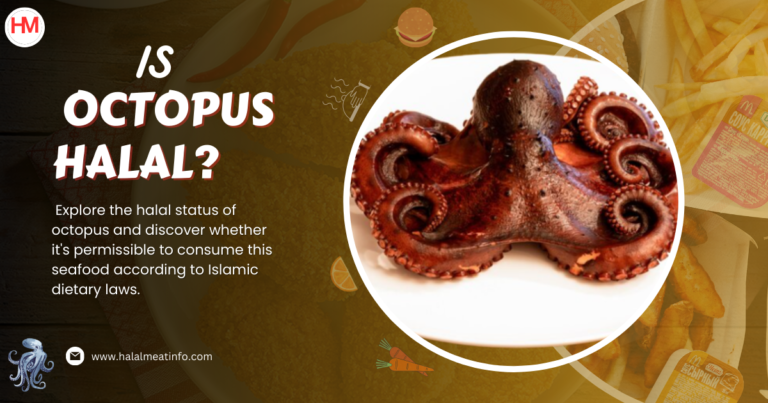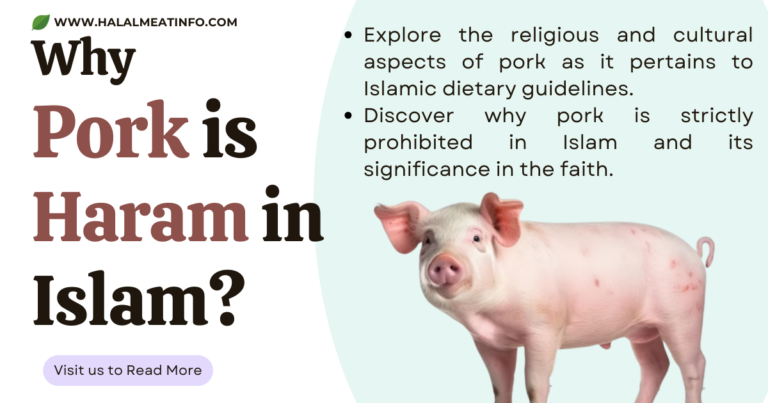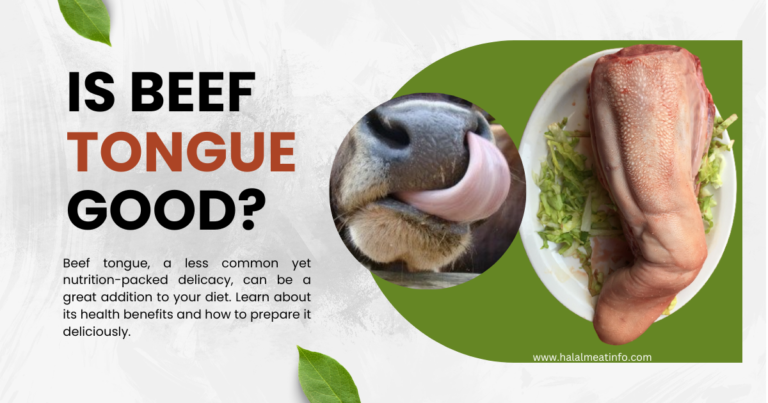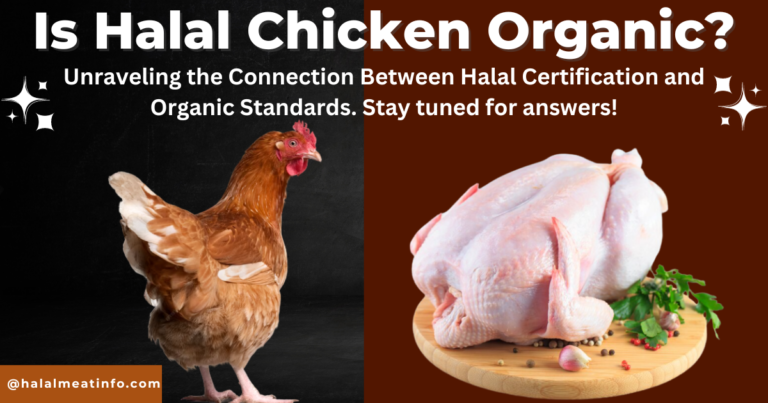What is the Difference Between Meat and Halal Meat?
When it comes to understanding the world of food, few topics stir as much curiosity and debate as the distinction between meat and Halal meat. While seeming similar to the untrained eye, these two types of meat embody many differences beyond mere culinary preference. So, whether you’re a food enthusiast keen on expanding your gastronomic knowledge, or just someone wondering what makes Halal meat a standout choice for millions globally, this comprehensive guide will help you unravel the mysteries surrounding this intriguing subject. Let’s embark on this culinary journey together!

What is Meat? Understanding the Basics
Meat is a term used to describe the edible flesh of animals that is consumed as food. It can be categorized into different types based on the source of the meat and the methods used in its production. In this article, we will explore the different types of meat and their respective production methods.
Types of Meats
- Red Meat: Red meat is meat derived from mammals, including beef from cows, pork from pigs, veal from calves, and lamb from sheep. These meats are rich in iron and protein but have also been linked to health issues when consumed in excess.
- Poultry: Poultry refers to the meat obtained from various types of birds, including chickens, turkeys, ducks, and geese. These birds are commonly raised and consumed for their meat. It’s often praised for being leaner and lower in saturated fat than red meat, making it a preferred choice for health-conscious consumers.
- Game Meat: Game meat refers to the meat from hunted or wild animals like deer (venison), rabbit, and certain types of birds like quail and pheasant. It is frequently regarded as a culinary delicacy because of its distinctive flavor, which is typically more intense and flavorful compared to meat from domesticated animals.
- Seafood: Seafood encompasses all marine organisms that are consumed as food by humans. This includes fish such as salmon, tuna, cod, and shellfish like lobster, shrimp, and clams. Seafood is renowned for being a nutrient-dense food that provides a valuable source of protein along with essential nutrients..
Exploring Halal Meat: An Islamic Perspective
Halal meats holds a distinct space in the Islamic dietary tradition, demonstrating a unique approach to animal welfare, slaughter, and consumption. Its principles align with the ethical standpoint of Islam, promoting kindness, respect, and mercy towards all creatures.
The Lifecycle of Halal Animals
Halal standards extend throughout an animal’s entire life, from birth until slaughter. Animals must be well cared for, fed a healthy diet, and given ample space to roam. Stress, harm, and cruelty toward animals are strictly prohibited.
Halal Slaughter Principles
In Halal slaughter, the animal’s welfare is of paramount importance. The slaughter must be performed by a sane adult Muslim and be swift and precise to minimize the animal’s suffering. The act of invoking the name of Allah (God) at the time of slaughter is a sacred practice that signifies gratitude and reverence for the sustenance bestowed upon us.
Dietary Laws and Restrictions
Islam sets forth various dietary laws and restrictions. According to Islamic dietary laws, the consumption of pork and blood is explicitly prohibited. Additionally, any animal that dies of natural causes or is killed by another animal is also considered “haram” or forbidden.
Spiritual Significance of Halal
Halal meats are more than just a dietary choice for Muslims; it holds profound spiritual significance. Consuming Halal food is considered a manifestation of faith, obedience, and commitment to Islamic principles.
Halal Certification
To ensure compliance with all these principles, Halal certification bodies exist across the globe. These organizations certify that products meet all Halal requirements, offering assurance to consumers about the integrity of their food choices.
You may also like to read about the difference between Halal and Haram Meat
Understanding What Halal Meat Is
Halal meat represents a unique facet of Islamic dietary laws and traditions. The term ‘Halal’ stands for anything that is lawful or permissible in the realm of Islam, and when it comes to meat, it implies that the animal has been slaughtered according to the specific guidelines outlined in the Islamic faith.
Religious Significance of Halal Meat in Islam
In Islam, Halal meat transcends beyond dietary restrictions and ventures into the sphere of religious duty and spiritual devotion. Consuming Halal meat is not merely a personal choice, but a religious duty for individuals who follow the Islamic faith. It is considered a direct command from Allah (God), and adhering to it symbolizes a Muslim’s submission to the divine will. It is essentially viewed as an act of worship, connecting the believer with their faith daily.
The Halal Process: From Farm to Table
The Halal process involves stringent procedures, reserving paramount importance to the ethical treatment of animals at every stage.
- Rearing: Right from the birth of the animal, the Halal process begins. The animals must be raised humanely and compassionately, provided with suitable living conditions, adequate food and water, and a life free of undue stress or pain.
- Slaughtering: The method of slaughter in the Halal process is explicit and must be adhered to diligently. The animal should be healthy during slaughter, and a sane, adult Muslim should perform the act.
- Processing: Post-slaughter, the meat is prepared as per Islamic customs. The blood is thoroughly drained from the veins, as consumption of blood is prohibited in Islam.
- Certification: Finally, certification bodies certify that the meat is indeed Halal to affirm the adherence to all Halal guidelines. This assures Muslim consumers that their meat aligns with their religious beliefs.
Key Differences Between Meat and Halal Meat
Dietary Restrictions
- Halal Meat: Eating pork and blood is strictly prohibited in Halal meats production. Additionally, any animal that dies of natural causes or is killed by another animal is considered “haram” or forbidden.
- General Meat: There are no dietary restrictions when it comes to general meat production.
Spiritual Significance
- Halal Meat: Consuming Halal meat is seen as an act of faith, obedience, and devotion to Islamic teachings. It is viewed as an expression of submission to Allah (God)’s divine will.
- General Meat: General meat does not possess any spiritual significance and is considered merely a dietary choice.
Treatment of Animals
- Halal Meat: Animals are treated with the utmost respect and compassion and given ample space to roam. They must be fed a healthy diet and be free of any stress or harm.
- General Meat: Factory farming is the predominant method of animal production, which involves raising animals in confined spaces, often resulting in distress and harm to the animals.
Slaughtering Process
- Halal Meat: The slaughter process is a central part of the Halal process and must be performed with due care and respect. It is conducted by a sane adult Muslim who utters the name of Allah (God) while invoking mercy towards the animal, signifying gratitude for their sustenance.
- General Meat: The method of slaughter can vary greatly in general meat production, depending on
Processing
- Halal Meat: After slaughtering, the blood must be thoroughly drained from the veins before processing.
- General Meat: The blood may not be completely removed during general meat processing.
Certification
- Halal Meat: Halal certification is available to ensure that all Halal requirements are met during the production process.
- General Meat: No specific certifications exist for general meat products
Benefits of Meat and Halal Meat: Scientific Research
Both Halal and general meat consumption offer several health benefits owing to the high nutritional value of meat.
General Meat Benefits
Meat is a valuable source of protein, which plays a vital role in building and repairing body tissues. It also provides a variety of vitamins and minerals, including B vitamins, iron, zinc, and selenium, which play crucial roles in many bodily functions [1]. Consuming meat is particularly beneficial for promoting muscle growth, boosting immunity, and supporting red blood cell production.
Halal Meat Benefits
Aside from the general nutritional benefits, Halal meats also provides unique advantages. The Halal slaughtering process, which includes thorough blood drainage, results in meat that has less microbial load, making it safer and healthier. A study published in the Journal of Food Protection found that Halal slaughtered chicken had less bacterial contamination compared to conventionally slaughtered chicken [2]. Additionally, the ethical and humane treatment of animals in Halal practices could potentially lead to higher-quality meat, as animal stress can adversely affect the meat’s color, texture, and taste [3]. Read more about the scientific benefits of halal meats.
In essence, both Halal and general meats offer considerable health benefits. However, Halal meat, due to its specific slaughtering and processing practices, may provide additional safety and quality advantages.
Health Implications: Analysis of Consuming Meat vs. Halal Meats
There are divergent views on the health implications of consuming Halal meats versus general meat. The primary distinction between the two lies in the method of slaughter, specifically, blood draining in the Halal process.
General Meat Consumption
General meat, if not handled and processed correctly, may pose health risks. The presence of blood in meat can create an environment conducive to the growth of bacteria, including E. coli and Salmonella, which are known to cause foodborne illnesses [4]. Furthermore, general meat production often involves the use of hormones and antibiotics, which can have implications for human health, including antibiotic resistance [5].
Halal Meat Consumption
On the other hand, Halal meat, due to the mandatory blood drainage, is often considered safer as it reduces the risk of blood-borne diseases [6]. Moreover, Halal guidelines prohibit consuming dead animals and those killed by predators, further reducing the risk of diseases [7]. It’s important to note that the use of hormones and antibiotics is not explicitly banned in Halal meats production but should ideally be avoided in keeping with the ethical principles underlying Halal.
More studies are required to make categorical assertions about the health implications of consuming Halal meats versus general meats. However, existing literature suggests that Halal meats, due to its rigorous production and processing guidelines, may present less risk in terms of foodborne diseases.
Cultural and Geographical Variations: Exploration of Meat and Halal Meat Consumption
Cultural and geographical differences greatly influence meat consumption and preference for Halal meats. These variations stem from religious beliefs, dietary laws, culinary traditions, and societal norms prevalent in different regions.
Meat Consumption
In Western countries, meat, particularly beef and pork, form a significant part of the diet [8]. In contrast, in many Asian countries, meat is typically consumed in smaller quantities, often as part of a mixed dish, rather than a central item [9]. This variation can be attributed to the influence of traditional dietary patterns, the availability of different types of meat, and the cost of meat products.
Halal Meat Consumption
Halal meats consumption largely correlates with the presence of Muslim populations. In regions with substantial Muslim communities, such as the Middle East, North Africa, and parts of Asia, Halal meat is a staple [10]. In contrast, Halal meat may be less common in areas with smaller Muslim populations, though global trade and migration have significantly increased its availability worldwide [11].
A study by Bonne & Verbeke (2008) suggests that perceived quality and healthiness are the main drivers behind Halal meat consumption among European non-Muslims [12]. This suggests that cultural and geographical boundaries are becoming less significant in shaping dietary choices as understanding and accepting different food practices grow.
Conclusion
In conclusion, while both standard and Halal meat share similar nutritional profiles, differences lie primarily in the slaughter and processing methods. Halal meats, compliant with stringent religious guidelines, ensures thorough blood drainage, potentially reducing the risk of blood-borne diseases. Its guidelines often discourage the use of hormones or antibiotics, whereas these substances are commonly found in standard meat production. However, it’s crucial to note that the quality of both Halal and standard meat largely depends on the adherence to animal welfare and hygiene practices, making consumer awareness and regulatory oversight vital. Regardless of the choice, moderation and balance in consumption are key to a healthy diet.
References:
- Selhub, J. (2013). The many important roles of meat in the diet. Harvard Health Blog.
- Regenstein, J. M., Chaudry, M. M., & Regenstein, C. E. (2003). The Kosher and Halal food laws. Comprehensive Reviews in Food Science and Food Safety.
- Gregory, N. G. (2010). Animal welfare at markets and during transport and slaughter. Meat Science.
- Foodborne Illnesses and Germs – Centers for Disease Control and Prevention
- Antibiotic Resistance from the Farm to the Table – Centers for Disease Control and Prevention
- Halal and Kosher Slaughter Methods and Meat Quality: A Review – Meat Science
- Halal Meats Production and Trade – Food and Agriculture Organization of the United Nations
- The Role of Red and Processed Meat in British Diets: A Review of the Epidemiological Evidence – Journal of Human Nutrition and Dietetics
- Meat Consumption in Asia: Dietary Trends and Impact on Human Health – Nutrition Reviews
- Consumption Preferences and Behavior in the Halal Meats Market: An International Review – Foods
- Global Trade Patterns in Fruits and Vegetables – United States Department of Agriculture
- Bonne, K., & Verbeke, W. (2008). Religious Values Informing Halal Meats Production and the Control and Delivery of Halal Credence Quality. Agriculture and Human Values.

